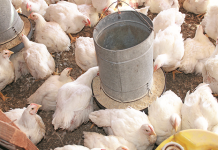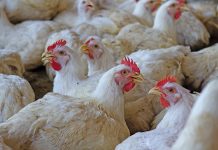It’s well known that many rural households in South Africa depend entirely on farming for their survival and to generate an income. Yet it’s not always realised just how many. According to Stats SA, about 36% – that’s well over a third – of the country’s households live in rural areas. And of these, no fewer than 71% have access to land for farming.
While many rural farmers might never go beyond subsistence farming, a significant number could grow food to sell in quantity – if they had access to markets. The reason they don’t is mainly due to the way in which the agri-food sector has always procured produce. Many stores owned by retail groups obtain their fresh produce from the group’s regional distribution centres. These in turn buy it from a few selected suppliers – invariably large-scale, commercial producers.
This model has been used for decades, not only in South Africa, but elsewhere in the world, and has always shut out smallholders. Yet in the last few years, there have been changes in this pattern, and this is giving new hope to small-scale farmers.
New patterns of buying
As many retailers have expanded, retail stores have begun cropping up in non-traditional areas, such as townships and semi-rural areas. More importantly, these retailers have begun making use of small-scale farmers in the neighbourhood.
Pick n Pay, for example, has become involved in emerging farmer projects, guaranteeing a market for them.
And as I reported last week, Massmart has made a R15 million commitment to provide a market for smallholder farmers in rural Limpopo. Initiatives such as these also go a long way towards addressing another big problem faced by emerging farmers: lack of finance. Massmart, for instance, offers farmers offtake agreements, which gives them an advantage when trying to secure loans.
In addition, both Pick n Pay and Massmart have been involved in training farmers. While any form of training is to be welcomed, I particularly like the look of a cluster farming, skills transfer model being negotiated between Minister Tina Joemat-Pettersson and TAU SA. A commercial farmer acts as a distribution point as well as mentor for six to eight emerging farmers in the area. The small-scale farmers use the commercial farmer’s storage facilities and benefit from his advice.
If possible, they even share his market. Run by the right people, this system just might work. One example of a small-scale farmer who benefited greatly from having commercial support is Jimmy Ka-Botha (see Farmer’s Weekly June 15, pg 64). He knew little about farming when he started, yet today is a highly promising emerging commercial farmer. He is based close to several commercial farmers who taught him all he knows today.
He also distributes his produce through a commercial farmer’s packhouse, a highly effective arrangement. This sort of collaboration, and the promise of more to come between government, commercial farmers and retailers, gives me hope that emerging farmers can gain a respectable share of the market.











